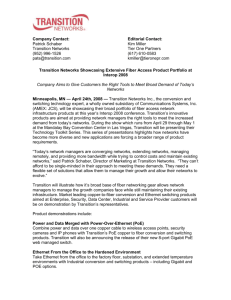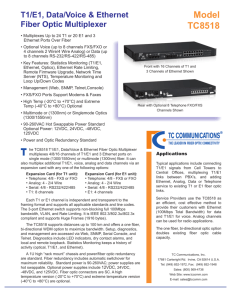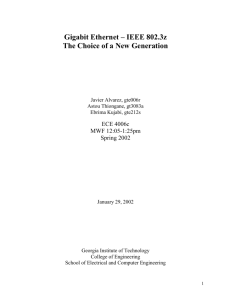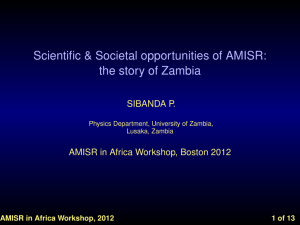Executive Summary
advertisement
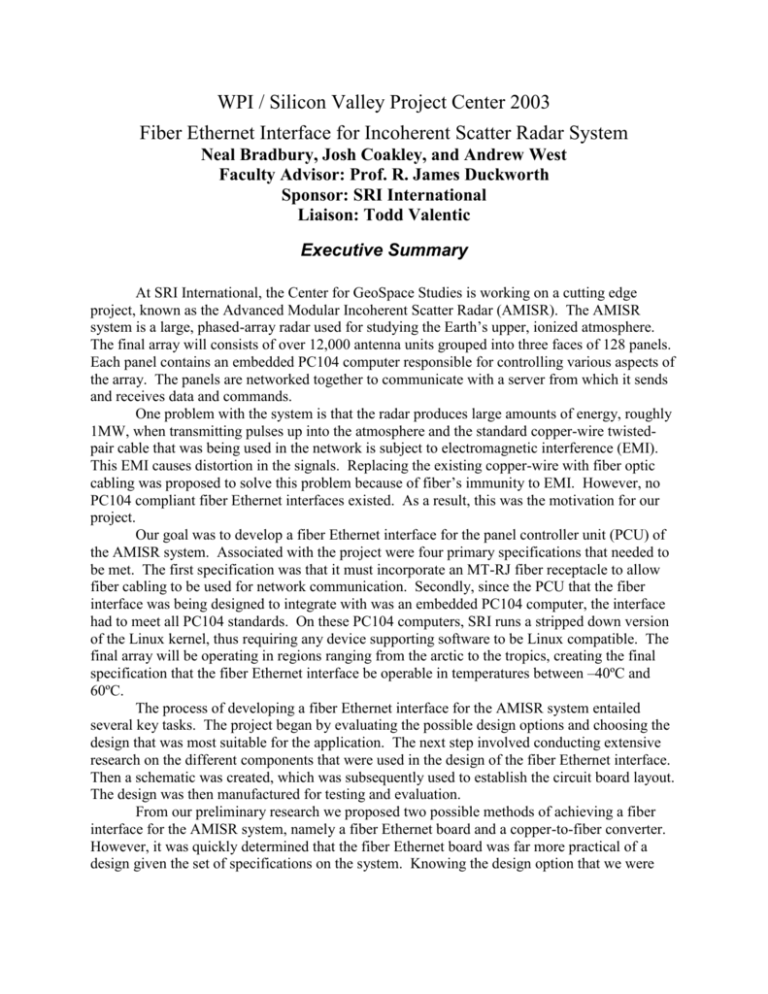
WPI / Silicon Valley Project Center 2003 Fiber Ethernet Interface for Incoherent Scatter Radar System Neal Bradbury, Josh Coakley, and Andrew West Faculty Advisor: Prof. R. James Duckworth Sponsor: SRI International Liaison: Todd Valentic Executive Summary At SRI International, the Center for GeoSpace Studies is working on a cutting edge project, known as the Advanced Modular Incoherent Scatter Radar (AMISR). The AMISR system is a large, phased-array radar used for studying the Earth’s upper, ionized atmosphere. The final array will consists of over 12,000 antenna units grouped into three faces of 128 panels. Each panel contains an embedded PC104 computer responsible for controlling various aspects of the array. The panels are networked together to communicate with a server from which it sends and receives data and commands. One problem with the system is that the radar produces large amounts of energy, roughly 1MW, when transmitting pulses up into the atmosphere and the standard copper-wire twistedpair cable that was being used in the network is subject to electromagnetic interference (EMI). This EMI causes distortion in the signals. Replacing the existing copper-wire with fiber optic cabling was proposed to solve this problem because of fiber’s immunity to EMI. However, no PC104 compliant fiber Ethernet interfaces existed. As a result, this was the motivation for our project. Our goal was to develop a fiber Ethernet interface for the panel controller unit (PCU) of the AMISR system. Associated with the project were four primary specifications that needed to be met. The first specification was that it must incorporate an MT-RJ fiber receptacle to allow fiber cabling to be used for network communication. Secondly, since the PCU that the fiber interface was being designed to integrate with was an embedded PC104 computer, the interface had to meet all PC104 standards. On these PC104 computers, SRI runs a stripped down version of the Linux kernel, thus requiring any device supporting software to be Linux compatible. The final array will be operating in regions ranging from the arctic to the tropics, creating the final specification that the fiber Ethernet interface be operable in temperatures between –40ºC and 60ºC. The process of developing a fiber Ethernet interface for the AMISR system entailed several key tasks. The project began by evaluating the possible design options and choosing the design that was most suitable for the application. The next step involved conducting extensive research on the different components that were used in the design of the fiber Ethernet interface. Then a schematic was created, which was subsequently used to establish the circuit board layout. The design was then manufactured for testing and evaluation. From our preliminary research we proposed two possible methods of achieving a fiber interface for the AMISR system, namely a fiber Ethernet board and a copper-to-fiber converter. However, it was quickly determined that the fiber Ethernet board was far more practical of a design given the set of specifications on the system. Knowing the design option that we were going to pursue, we then composed a system block diagram. This diagram helped distinguish the various components that make up the fiber Ethernet board design. A great deal of research was done on the three core components depicted by the block diagram. From this research, we compiled a list of possible components to be used in each block of the design. We then performed some value analysis on each component to select the parts that best suited the requirements of the project and were compatible with the other parts in the system. Once the components being used in the design were selected, we created a schematic. This was accomplished with the use of Orcad, an electrical engineering computer aided design tool used to create circuit schematics. Extensive use was made of each components datasheets and application notes to help us correctly wire and terminate every pin on every component. The finished schematic was then used to help establish the circuit board layout. This phase of the design was completed by John Binder, a development engineer who has years of layout experience. After several SRI engineers and we reviewed the circuit board layout, it was sent to Sanmina-SCI for manufacturing. This process was broken down into two steps: board fabrication and board assembly. The first step yielded a solder sample, which is the circuit board with all of its solder pads and copper traces, but does not include any of the components. This was examined to confirm that all the traces and pads looked accurate. Once confirmed, the board was assembled and returned to us for testing. Testing procedures were developed during the manufacturing process so that testing could begin as soon as the manufactured board was received. Procedures ranged from using a multi-meter to check power and clock signals to configuring the device via hardware and software to test its functionality. Although testing and debugging took nearly two weeks, the results were well worth it. The first revision of the board was fully functional. The final product of this project was a fiber Ethernet board that met all of the specifications and exceeded all functional expectations. With minor modifications, SRI will be able to manufacture our board in large quantities. For the final AMISR system, 384 of our fiber Ethernet boards will be used.


